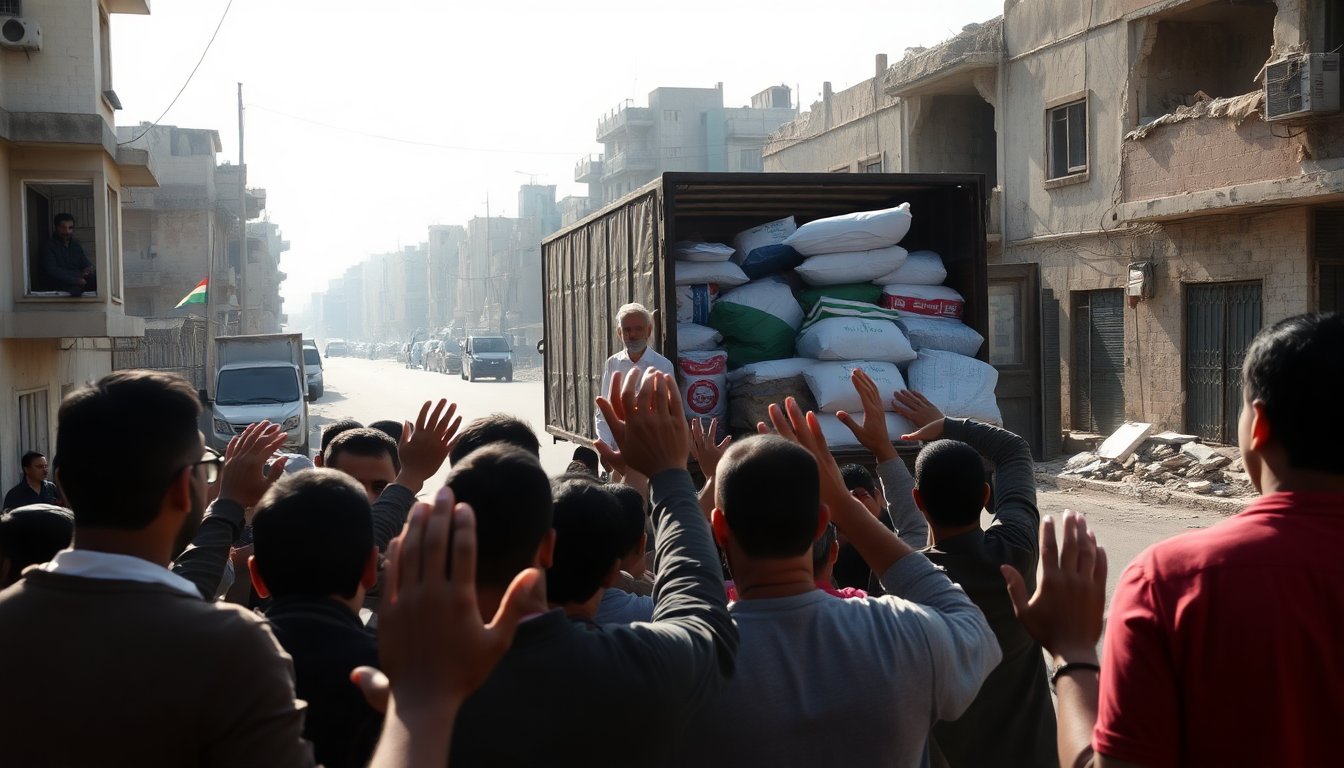Table of Contents
In a significant turn of events, Israel announced its expectation that all living hostages held in the Gaza Strip would be released on Monday. This development follows a breakthrough ceasefire agreement with Hamas, offering a glimmer of hope for an end to the ongoing conflict that has persisted for two years. Palestinians are anxiously awaiting the arrival of promised humanitarian aid into the region as this announcement unfolds.
The Israeli government, represented by spokesperson Shosh Bedrosian, indicated that they anticipate all 20 living hostages will be released simultaneously. These hostages are expected to be transferred to the Red Cross before being escorted in a convoy of six to eight vehicles. Bedrosian emphasized that this exchange differs from previous instances, with Israel preparing to transport the freed hostages to a military base for family reunification or immediate medical attention if necessary.
Release of hostages and subsequent actions
Following the release of the hostages, Israel plans to reciprocate by releasing around 2,000 Palestinian detainees and will formally recognize the 28 hostages believed to have passed away. A ceremony is planned in Gaza to honor these deceased individuals, with their remains expected to be sent to the Institute of Forensic Medicine for identification. Furthermore, an international task force will be established to search for deceased hostages who may not be returned within a 72-hour timeframe, as noted by Gal Hirsch, who coordinates efforts for Hostages and Missing Persons.
Impact of the ceasefire on humanitarian aid
As discussions around the hostage situation develop, preparations are also underway to enhance the flow of humanitarian aid into Gaza, which has suffered tremendously due to ongoing conflicts. The Israeli military body overseeing humanitarian efforts indicated that the volume of aid entering Gaza is projected to rise to approximately 600 trucks per day, as stipulated in the ceasefire agreement.
On the Egyptian side of the border, around 400 aid trucks were dispatched into Gaza, carrying essential supplies such as medical equipment, food, blankets, and fuel. These trucks were observed crossing the Rafah border crossing, and the Egyptian Red Crescent Society confirmed their contents. The trucks will undergo screening at the Kerem Shalom crossing by Israeli forces before distribution.
Humanitarian crisis and the role of international organizations
The ongoing conflict has exacerbated the humanitarian crisis in Gaza, leading to a severe hunger situation, with some areas facing famine-like conditions. The United Nations has over 170,000 tonnes of food and medical supplies ready for delivery, contingent on Israeli approval. Abeer Etifa, a representative for the UN World Food Program, stated that teams are actively working to clear and repair roads within Gaza to facilitate these crucial deliveries.
Uncertainty surrounding food distribution
The future of the Gaza Humanitarian Foundation (GHF), a contractor backed by Israel and the U.S. that took over food distribution from the UN in May, remains uncertain. Following the ceasefire announcement, several distribution sites operated by GHF in key areas like Rafah and central Gaza were reportedly dismantled. Although GHF was considered a solution to ensure aid did not fall into the hands of Hamas, its operations have faced significant challenges, with reports of violence against civilians during attempts to access aid.
In the meantime, President Donald Trump is expected to arrive in Israel, where he will meet with families of hostages and address the Knesset. Following his engagement in Israel, Trump will travel to Egypt to co-chair a peace summit alongside President Abdel-Fattah el-Sisi, gathering regional and international leaders to discuss ongoing peace efforts.
Future implications of the conflict
The timeline for the release of Palestinian prisoners held in Israel remains to be confirmed. Under the current agreement, approximately 250 individuals serving life sentences, in addition to 1,700 people detained during the conflict, will be released. Dr. Mounir al-Boursh, head of Gaza’s Health Ministry, expressed hope that among those released will be medical personnel who died in Israeli facilities, as well as the return of two detained doctors.
As hostilities have temporarily halted, many Palestinians are returning to areas previously occupied by Israeli forces, only to find their homes in ruins. Satellite imagery has revealed vehicles moving toward Gaza City along the coast, where displaced residents are setting up tents to evade bombardment. Local police forces, aligned with Hamas, are overseeing aid truck movements through these regions.
The Israeli government, represented by spokesperson Shosh Bedrosian, indicated that they anticipate all 20 living hostages will be released simultaneously. These hostages are expected to be transferred to the Red Cross before being escorted in a convoy of six to eight vehicles. Bedrosian emphasized that this exchange differs from previous instances, with Israel preparing to transport the freed hostages to a military base for family reunification or immediate medical attention if necessary.0


